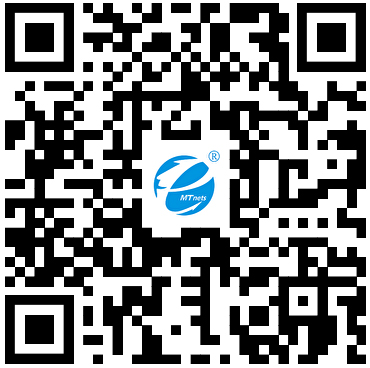LTMS模块化液体透射测量系统
- 公司名称 蔚海光学仪器(上海)有限公司(海洋光学)
- 品牌 OceanOptics/海洋光学
- 型号
- 产地
- 厂商性质 生产厂家
- 更新时间 2024/1/10 9:14:00
- 访问次数 1987
联系方式:张昊翔4006232690 查看联系方式
联系我们时请说明是化工仪器网上看到的信息,谢谢!
微型光谱仪;微型光纤光谱仪;近红外光谱仪;拉曼光谱仪;荧光光谱仪;紫外可见光谱仪;便携式光谱仪;光纤光谱仪;光纤;薄膜;光纤传感器;氧含量传感器;ph值传感器;化学传感器;探头;光源;
| 按探测器 | CCD | 分辨率 | 0.5nm |
|---|---|---|---|
| 光谱范围 | 可见,400-700 可定制nm | 光谱范围 | 可见,400-700 可定制nm |
| 价格区间 | 面议 | 应用领域 | 食品,化工,综合 |
| 输出间隔 | 10nm |
FD-LTMS是一种模块化设计的光谱透射测量系统,旨在快速、高效、高精度的分析或监测食品饮料、酒类、染料等需要对组分严格控制的溶液的不同组分的浓度。LTMS模块化液体透射测量系统目前已被验证并用于铝阳极氧化染料槽浓度的监测,该系统也可用于实验室溶液浓度的快速分析,还可以配合自动流体控制装置实现溶液浓度的实时在线分析/监测,为制程中产品良率改善提供可视化实时建议。
测量参数:
不同组分浓度
可见光波长的透射曲线
可见光波长透射率
可计算色坐标
可计算实际浓度与理论浓度偏差
应用领域:
阳极氧化溶液实验室/在线监测
食品饮料/酒类成分分析
玻璃或其他透明材料透射率测量
LTMS模块化液体透射测量系统产品优势:
体积小巧:模块化设计,易于集成
光源寿命:脉冲LED,>250m测量次数
加固结构:IP67防水外壳,使用复杂环境

Note: The author of this application note featuring the LTMS is Amy J. Ray Bauer, Ph.D., Principal Applications Scientist.
Anodization is an industrial passivation process that augments aluminum’s natural tendency to form an oxide layer on a bare surface, an effect known as “self-passivation.” In all types of anodization, the piece to be treated acts as the anode electrode of an electrolytic system. Generally, this process is employed to render the surface more resistant to wear and corrosion, but the increased porosity of the surface after anodization can be used to introduce artful cosmetic effects.
Anodizing creates a layer of oxide on the surface of bare metal, and in doing so changes the properties of the surface. The oxide layer includes microscopic porosity, a decrease in surface conductivity, and an increase in superficial hardness. The oxide layer has a much higher melting point than the base aluminum, making it subject to thermal cracking but not peeling, when the piece is heated past about 80 °C, because of the difference in thermal expansion coefficients between the bare metal and the oxide.
The process of anodization begins with a thorough cleaning of the surface, and then one of three chief processes are applied. Each differs in terms of the resultant coating.
Type 1: Chromic Acid Anodization
Using chromic acid as the electrolyte, this type of anodization typically produces films of oxide that are between 0.5-18 um. These films are softer, more ductile and generally, more opaque than other processes. Because of their softness, they are self-healing to some degree. This type of film is not generally amenable to dyeing, but the process is a good pre-treatment for painting.
Types 2 and 3: Sulfuric Acid Anodization
This type is segregated into coatings of moderate thickness (Type 2) and those thicker than 25 um (Type 3). Thicker coatings require more extensive and complex process control, involving temperature control and higher voltages than thinner films. Thicker films are more useful with respect to wear and corrosion resistance, and thermal and electrical insulation. Sealing on the thick films tends to reduce these properties.
Organic acids, phosphoric acid and borate/tartrate baths also are used to produce oxide films on aluminum parts.
Anodization and Dyeing Processes
The porosity of the oxide layer formed in anodization processes permits the surfaces to readily accept dyes. Because these dyes are basically an optical filter on the surface of the aluminum part, the colors vary to some degree on the base alloy. The dyes can be either organic or metallic, the latter used more extensively in applications requiring relative stability to sunlight. The dyeing process is typically done in a bath following the anodization process but is sometimes incorporated during the electrolytic process using organic acids mixed with the sulfuric acid. Following dyeing procedures, the surface is normally sealed to aid corrosion resistance and dye preservation.
In both dyeing approaches, the bath conditions must be monitored and controlled. Temperature, pH, and bath dye concentration are all important variables that need to be closely regulated. In general, dye concentrations are specified by the vendor at some small number of grams/liter. In forums and other venues, anodization professionals have expressed the need for precise measurements, and in general, when precision is called for, invoke the use of a spectrophotometer. The benefits to using wavelength dispersed absorption/transmission spectroscopy instruments are numerous:
They permit precise concentration measurements and dye concentrations, which in multi-component systems are complicated.
They allow relatively unskilled people to make the measurement and estimate strike times.
They allow the anodization shop to control measurements and make it unnecessary to reach out to the dye manufacturers for routine testing.
Automated spectrometry adds another layer of ease to this approach, by making periodic and unattended measurements. In such as system, the whole of the concentration analysis is automated.
About the Ocean Insight LTMS
The Ocean Insight LTMS performs real-time, in-line spectroscopic monitoring of the concentration of a wide variety of liquids, including dyes, plating baths, ingredients in foods and beverages, and other industrial applications. The instrument is based on the marriage of Ocean Insight spectrometers and an automated fluid handling system. Fluid is pumped from the point of analysis into a flow-through optical cell, compatible with a wide variety of potential solvents and analytes. The time per measurement is contingent on sample absorbance, pathlength and signal-to-noise requirements, typically ranging from 40 ms to 5 minutes.
The output from the device can be used to establish absorbance/transmission values, or the output can be passed through machine learning models to report concentrations, provide a process pass/fail, or to perform other controls to an online process.
The LTMS is a compact, ruggedized device suitable for harsh environments and is typically customized to each customer’s requirements. It has been extensively applied to various aqueous dye solutions, including those with multiple components. The information produced by the LTMS can be very beneficial in the challenging task of performing controlled color-matching in industrial processes.















 采购中心
采购中心
 化工仪器网
化工仪器网